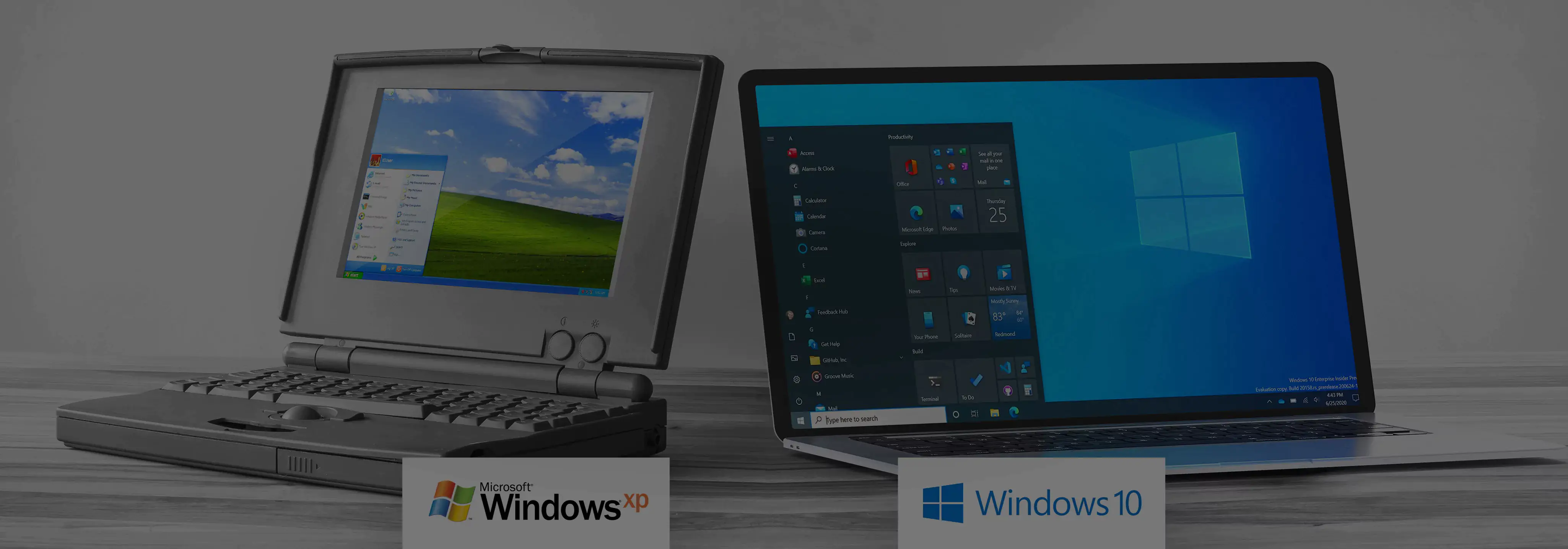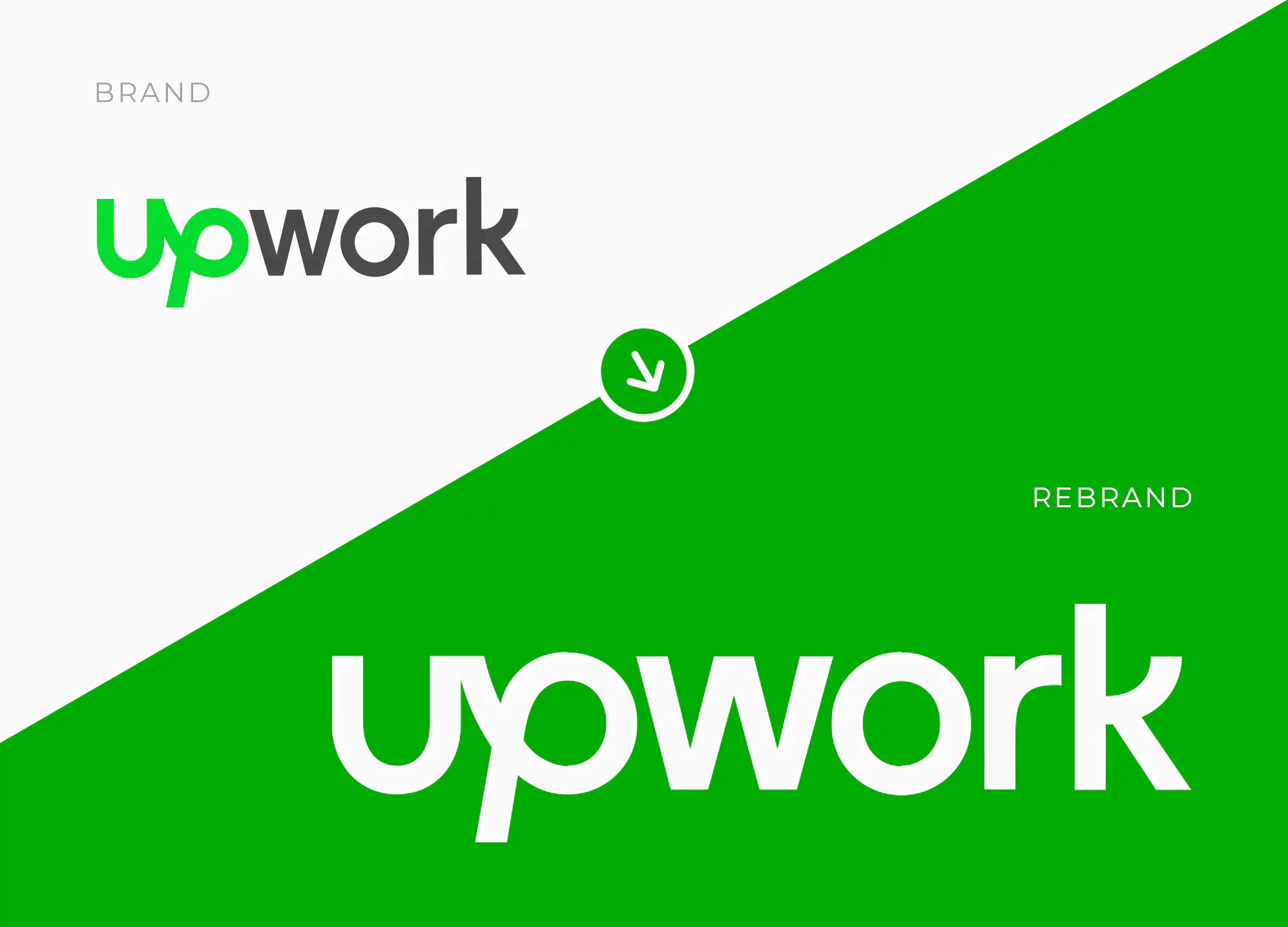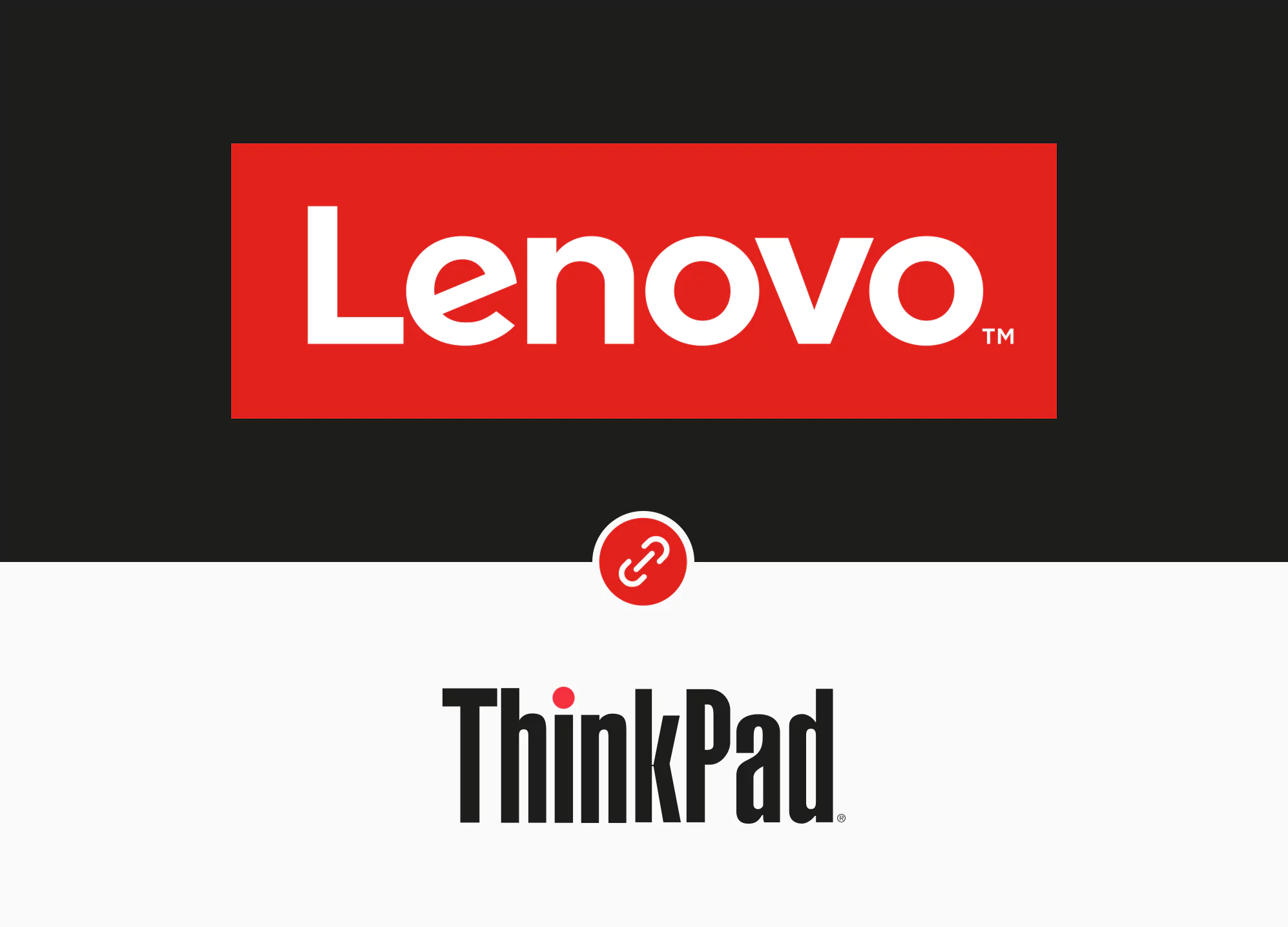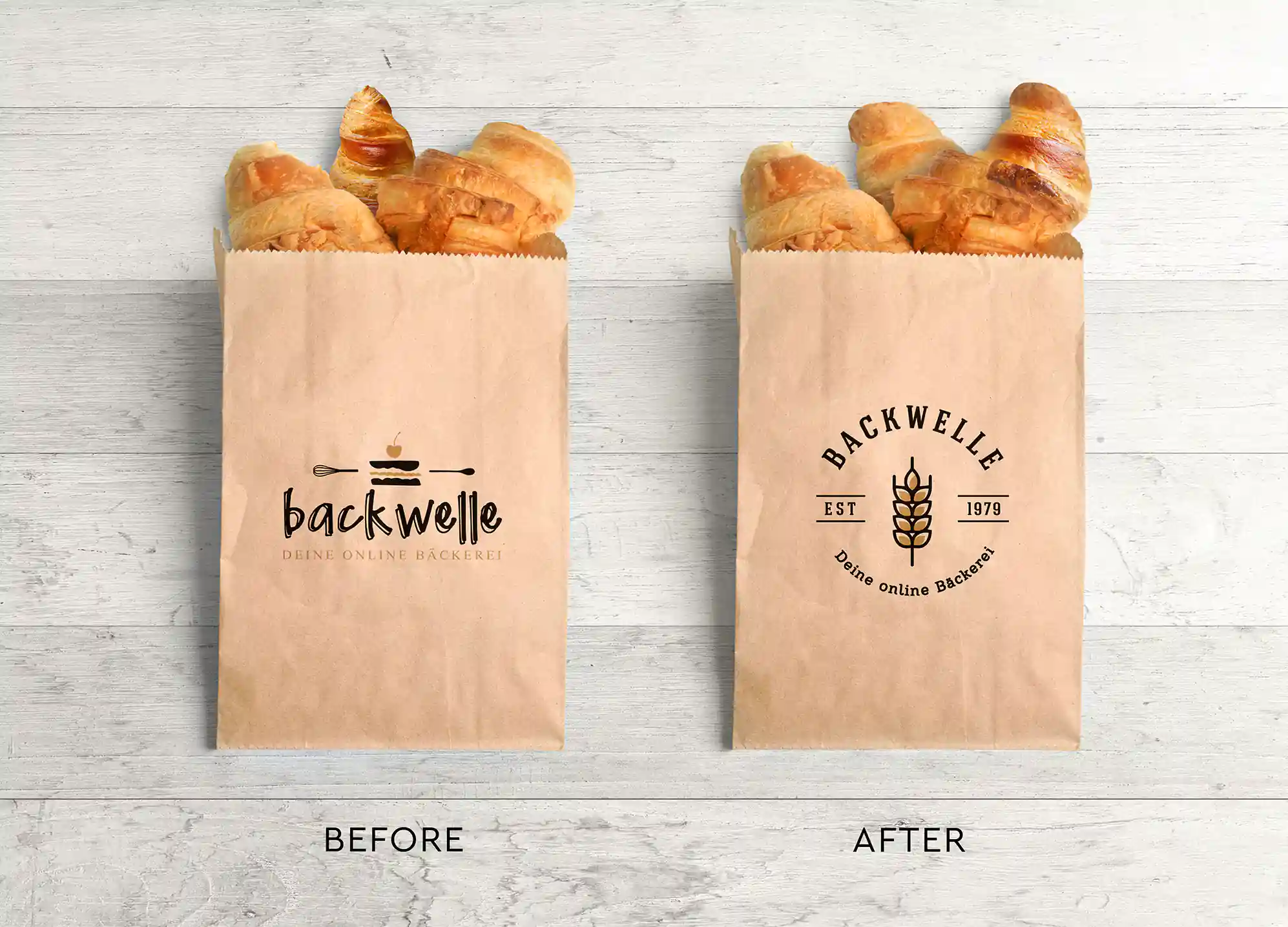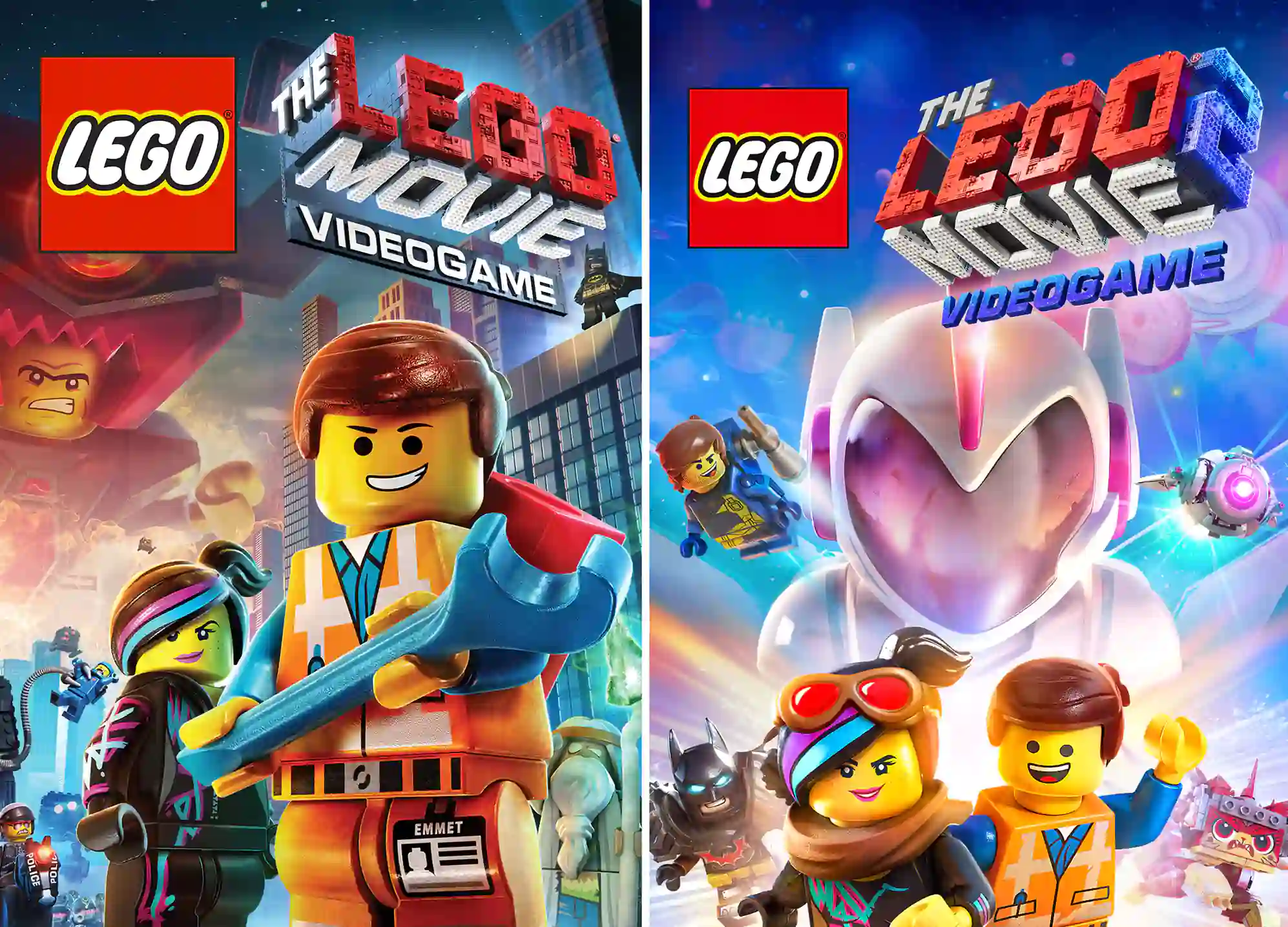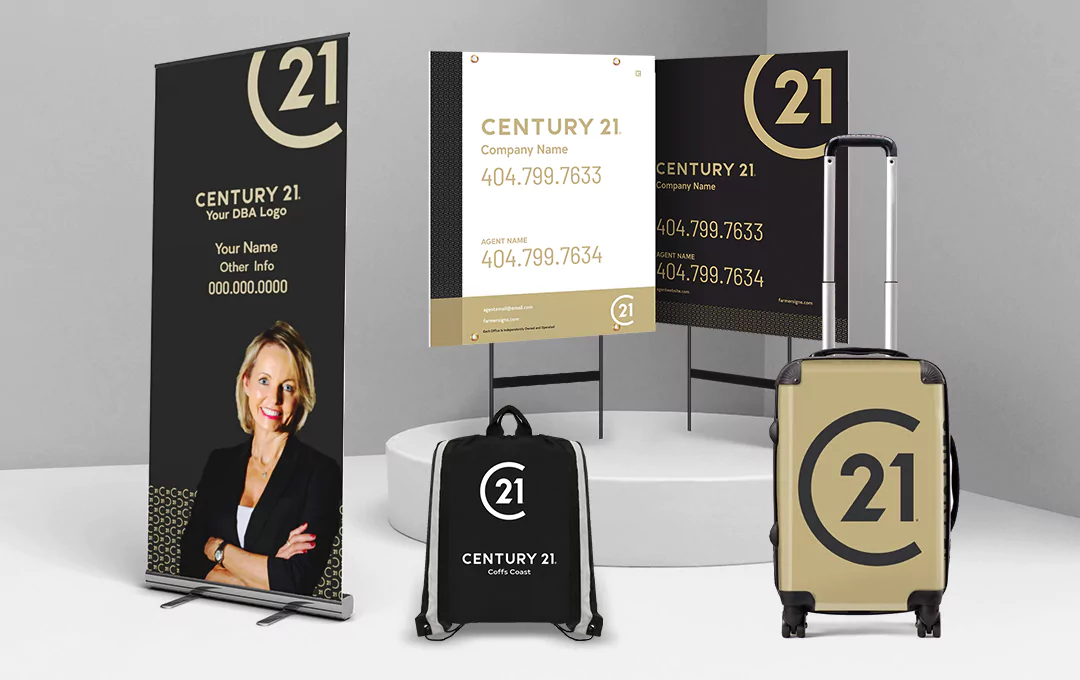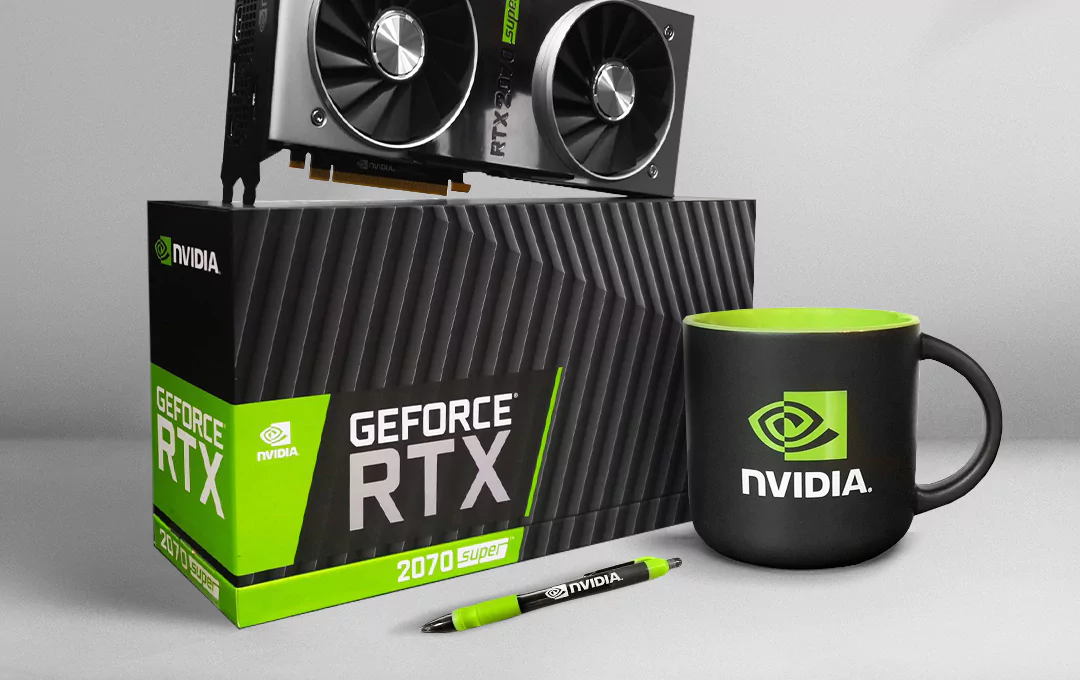A rebrand helps your business refresh, remain relevant, and ramp up market share. Unpack how to reap a rewarding ROI using these tried-and-true rebranding strategies.
The year 2021 saw quite a number of brands make wholesale changes that are more in line with their brand positioning — a vogue look here, a spanking new feel there, with a fresh pair of eyes on their logos, products and services, and overall brand messaging. One common theme that ran through these rebranding exercises was an increased focus on a younger target audience, and a brand identity built for the digital age.
Whether it’s Meta shaking loose from the reputational damage it suffered as Facebook to pursue an exciting bid to ‘bring the metaverse to life’, or BMW’s radical rebranding that involved a fresh, simple take on the brand’s colors, typeface, and design elements to go with a lighter and more modern feel, no matter the nature of your business, there comes a time when you need engage rebranding services to reflect your growth and what stage you are in the beautiful journey you’re taking your customers on.
Rebranding is a sure strategy for any business to accelerate growth, boost profits, empower workforce, and secure a competitive edge. You might want to connect with your consumers on a deeper level, or simply switch up your business’s outlook. Whichever the case, it’s probably about time you gave your brand a much-needed refresh, update, re-invention, or change at some point in its lifespan.
Let’s use Medium, the widely known digital publishing platform, as a case-in-point. In 2020, the brand unveiled a new identity. Their strategy was with the intention to better expressing who they felt they had evolved to.
Medium’s primary issue with its previous branding was a lack of flexibility in its design elements. The brand needed a better strategy that is bold and more expressive to better reflect the past, present, and future. After a few tweaks with the illustration style, coloring, and logo mark, the new identity was unveiled to their loyal readers.
The ultimate goal of the rebrand strategy was to “use this new language to build better and deeper relationships with readers and writers around the globe”.
It’s worth noting that it’s very easy to make a hash of rebranding projects with quack rebranding services. Not only does it cost time and money, but your business’s reputation is at stake if things go south. Gap’s rebrand in 2010 can be used as a perfect example of an epic fail. Without warning, the world-acclaimed fashion brand released a new logo overnight, replacing the old one that served the brand for over 20 years.
The spontaneous decision caused an uproar among the company’s loyal customers as the new logo was plain and in genuine. The internet was ablaze with disapproval, and in just six days after the release, Gap took on a strategy to revert to their old logo, much to everyone’s satisfaction. Today, the rebrand remains one of the most short-lived.
You might wonder, where did the company get it wrong in their strategy? Springing up the brand overhaul without warning was certainly a bad idea. Now you’re most likely wracking your head on the best rebranding strategies to give your brand the desired overhaul. If this is you, don’t fret. We’re here to help. But first, let’s keep you on the right track with some questions and answers:
What is a rebranding strategy?
Rebranding strategies help you whip up a rebranding campaign that helps you actualize your goals for a new phase. They can help you keep your legacy or introduce a new identity to the market.
What are the best branding strategies?
The brand refresh strategy helps revamp your brand’s identity while the merger strategy merges your brand with another. Likewise, the reinvention strategy helps with crisis recovery.
What to do after rebranding?
Don’t slack. Make sure the brand changes are updated on all platforms. Spread the word to your consumers, and ensure that you revisit your goals to keep your business on the right track. Stay alert!
Is a rebrand needed?
Many businesses hire rebranding services for a dozen reasons. It could be a growth spurt that demands their organization speaks to a wider market. It could also be that they are fast losing relevance and a refresh is a good way to rediscover their mojo like Tiffany & Co, a luxury jewelry and specialty retailer, did in 2021.
Tiffany lost its appeal as they resonated with an older generation, and with the majority of their target audience belonging to a much younger demographic, they took action.
Instead of clinging to a brand identity that no longer served them, they arrested this decline with a visual revitalization, as we can see with their “Not Your Mom’s Tiffany” brand messaging.
Now, regardless of why your organization may resort to a rebrand, it’s essential to execute it neatly, and professionally. It’s the most significant long-term investment you could ever make for your firm’s digital and physical success. Correspondingly, it has the potential to yield the highest ROI for your business.
The high-stakes scenario means you cannot afford to take your branding lightly. Your business needs a rebrand strategy not to be just another contender in the market, but to be an industry leader, to pave a new path, and to unlock new possibilities with your target audience.
From our experience, you need a partner — a professional branding agency with a deep commercial understanding of your industry to hold your hands through this phase.
If you need tips and insights on how to go about this, or you’re unsure about whether or not your business is ready for this move that will shake your brand’s foundation, we’re here to give you a hand. Taking out the time to fill out this short brief for a free consultation on your project from our experts will give you a head start!
To delve deeper into the essence of a rebrand, let’s take Galya, one of our unique completed projects with proven results, as an example. Galya is a cosmetics company based in Oslo, Norway, who reached out to our agency for rebranding service that involved ironing out a bold new identity that was an upgrade on the existing one.
They needed the brand overhaul as their previous identity saw them lose traction. It no longer captured the vision of the brand for an upscale target audience and they looked to re-establish themselves in the cosmetic industry. A brief research for branding agencies led them to us.
Our expert team involving marketers and designers held lengthy brainstorming sessions to have a deep commercial analysis of their company to research who their target audience was currently and for the future. This helped us step back and meaningfully examine objectives and missions. With this, we were able to draw up a winning strategy that major stakeholders in Galya could understand and rally behind.
We also came up with a new name, logo, and visual elements across relevant touchpoints including their packaging. The end result of the high-level creativity applied in this rebranding exercise was a new, up-to-date, authentic, and more appealing visual identity that could resonate with their customers, employees, investors, and their target audience.
In a matter of weeks after the rollout, Galya’s recognition and digital traction reached an all-time high. Its visual identity was given fresh life with a stronger emotional message. The strategy worked as the rebrand was appreciated by Galya’s customer base, and this saw their market share rise by a significant 35.7%, nudging ahead of 4 of their direct competitors in the process.
If Galya’s story gave you a good feeling, here are a few triggers that should make you consider giving your business a much-needed facelift:
Exponential Growth
We understand how most companies starting out with a lean budget sometimes try to cut corners when creating their starting brand identity. But sooner along the line, especially when fast-approaching their expansion targets, they find that they have outgrown their brand identity. So, their operation is no longer reflective of their brand story and identity — there is a disconnect.
For instance, Andersen Consulting’s brand refresh helped birth Accenture as research revealed that its market positioning as a company providing global management consulting and professional (strategy, tech, digital, and operations) service had outgrown the name “Anderson Consulting”.
Typically, growth forces organizations to widen their target audience, so an updated design will no doubt do a great job catching the attention of new clients. For a business to make its mark in the international market, it needs range. It should speak and stay relevant to diverse cultures and audiences.
When experiencing expansion, regional businesses usually have to start thinking up marketing and rebranding strategies to accommodate the fast-paced change. For example, if you have a brand name that is tied to a particular geographical location, switch it up. Consider your relocation a rebranding opportunity!
A close example is the famous all-purpose cleaning brands Mr. Clean and Mr. Muscle. To build familiarity with its South American customers, Mr. Muscle took on Spanish and changed its name to “Mr. Musculo.” In the same vein, Mr. Clean became “Don Limpio” for its Spanish customers and “Mr. Propre” to appeal to its buyers in France and Belgium.
This strategy created a high level of brand recognition across these countries, and it’s fair to say it bought them a large market share in the cleaning industry.
Change in target audience or markets
It’s perfectly normal for marketing objectives to experience change, evolution, and maturity. And in several cases, the target audience shifts as the years go by. In such instances, the brand undoubtedly has to adapt to the audience and changes in marketing.
Rebranding services will be the best call if your company diversifies into a new market, maybe because of a newly launched product or expanded service. Apple started as “Apple Computers.” As the years passed, the company’s strategy included broadening its reach towards the tablet and smartphone market, eventually making its mark as one of the most renowned gadget companies in the world.
What seemed like a perfect name at the start failed to reflect what they were all about. If this is you, then don’t let your brand name hold back everything it stands for. Give it a unique, memorable name that’ll lay a firm foundation for your company’s present and future.
Staying Trendy or getting a visual refresh
Design trends are ever-evolving, and a visually outdated brand is not something that pulls in any audience regardless of the demography. A brand might be bigger than colors and logos, but your customers will perceive your brand based on its visual representation.
Upwork’s new logo shows you that you don’t have to rock the entire architecture of your branding to get a visual refresh. Their switch from upWORK to UPWORK signposted a transition from noun to a verb. But that wasn’t the catch. The beauty of the rebrand strategy was that the design included a unified green wordmark which looked a whole lot better!
Image source: https://www.upwork.com
So, always keep your eyes peeled for the latest raves so you don’t end up sticking to an outdated look. These design changes are one of the major reasons your brand needs a re-engineering, especially if your fonts, shapes, and colors are starting to look out of touch or if your competitor has pulled off a stunning design you wish to outdo.
When it comes to your packaging, it is possible that your competitors are heavily influenced by, or outrightly copying the design of the leading brand in your industry, and it’s all looking boring. A visual refresh from your company will be a welcome break from the monotonous branding and it is likely the key differentiator that will nudge customers to rethink their choices.
While we get the need to be unique, you don’t want to be caught in design and branding fads that have exhausted their relevance. Stay sensitive to design trends and flow in whatever direction that brings you more traction. You can add your own creative, authentic touch. So, yes, there’s room for uniqueness.
To bring this to life, you need a branding agency with high-level creativity and commercial understanding to balance good design with visual cues that are a ‘market fit’ for your commercial needs. Rebrand rollouts are usually high-stakes projects that could trigger a bad reputation or customer backlash if things go awfully wrong.
The bottom line? You need an agency you can lean on. Expertise, experience & commitment are the key phrases here — with over 300+ unique completed projects by our award-winning branding agency with proven results, Stan Branding can help you put your big ideas through to your target audience with a skillfully executed rebrand.
Got help? One of the many ways we can guide you is through a free consultation and pre-development from our CEO himself. Click here to access it.
Mergers & Acquisitions
You might want to consider going for a new look if you’re going through a merger or an acquisition. These changes mostly call for a rebrand along the way since you’ll be introducing a whole different brand into yours.
With any merger or acquisition, it’s costly to stay uninformed. Do some research and find out how both brands can work together without confusion. More often than not, many businesses rush into the process and end up suffering. Customer confusion, redundancy, inconsistencies, and many more negative side effects begin to flop their marketing objectives.
Think about your brand architecture (the organizational branding structure for your business’s portfolio) and how well it can be fused with that of the acquired brand. Ensure that there is a coherent relationship between both, that way you’ll get to see the true value of the merger or acquisition.
When Lenovo purchased ThinkPad in 2004, they were a relatively unknown Chinese company. However, their strategic acquisition of Thinkpad earned them brand appeal to a western audience. Their rebrand earned them a lot of recognition and brand awareness that they didn’t previously have, plus a market cap of $13.731B.
Image source: https://www.lenovo.com
The Do’s and Don’ts of a Rebranding Strategy
Rebranding strategy isn’t just a decision you make on a whim. There are mountains of things to consider, especially if your company has strong brand recognition. The process goes beyond logo modifications, industry research, revamped designs, and other surface alterations. Those are simply results you get from the process itself.
Don’t fret. Many companies have had to rebrand, and have sailed through with tangible benefits. Getting insights from their wisdom (or the lack of it) is the right step towards having a water-tight rebranding strategy.
We’ve made this easy for you. Here are some do’s and don’ts of rebranding strategies you might want to keep in mind:
Rebranding Strategy Dos
Have a tangible reason
It’s super important to keep in mind that not all problems warrant a rebrand. Seeking rebranding service isn’t something you do monthly or annually. In fact, there are businesses that have never had reasons to change their brand outlook — just yet — while others have only had to do it once, or even twice!
You know why? It’s simply because rebranding is a long, thorough process that shakes the foundation of any brand — its identity. Do that all the time, and you’re likely to confuse customers and lose them. Also, it’s not the most professional look.
If you’re sure it’s the best thing for you, look out for things your brand lacks and all the areas that need improvement. Brainstorm on what you could have done differently, and use it to steer the direction of your rebrand strategy.
Research
Carry out extensive research and find how you can make your brand excellent and exceptional. Research gives you useful insight into how your company is perceived by the market. It also makes it easy for you to improve on your strategies and to generally boost your customer experience.
More often than not, you need a professional agency to help you cater to this aspect with a deep commercial understanding of how research findings and top industry trends can be applied to appeal better to your target market.
Since our inception in 2016, our award-winning branding agency has had an awful lot of collaborations involving unique completed projects with proven results, positioning us to lay your queries to rest. So, If anything isn’t clear and you’d like to get the weight off your shoulders, feel free to contact us. Our expert team is always happy to lend a helping hand!
Inform your stakeholders
Stakeholders are important to every business — your investors, employees, and customers. Make sure to keep them in the loop because they also have a say. If you exclude major stakeholders as you try to rebrand, it may lead to some problems and confusions along the line.
Put some ease into the process by informing them before the rebranding starts. Take your strategy one step closer to implementation by delivering a presentation to explain your reasons for a rebrand.
For the presentation, crunch the data, analysis, numbers, customer feedback, reviews, etc. to explain why exactly having a rebrand is paramount. The more detailed the presentation of your strategy is, the easier it is to convince them why another packaging is a good commercial move.
They’re most likely going to have several questions for you, so make sure you give valid, accurate answers to avoid any future objections during the rebranding process.
Keep your promises
After implementing your rebrand strategy, ensure that you go the extra mile to deliver on everything your revamped business promised its clients. You really don’t want to be that brand that fails to keep its word.
A rebrand strategy introduces a new you to your audience, and it’s advisable that you start off on the right footing. Delivering on all your promises and campaigns is a surefire way to gain the trust and acceptance of the public.
When Backwelle bakery reached out to us for rebranding service, the Ohio-based company had just announced their acquisition of the Robert Davis bakery, they chose to retain their household name to preserve their brand equity, but go with a new customer-facing brand identity that was more reflective of their industry status.
After industry research, we came up with a project plan including winning design and the transition strategy that was the bedrock of the rebranding process. Without tossing out their vision and core values, we tweaked the visual aspects of the bakery’s identity and strung them together into one perfect whole.
Our team of experts went into brainstorming sessions to hatch creative ideas on how to switch up the logo with a modern style that still paid homage to its years of credibility (this was an opportunity not to be missed for the company as they were established “est 1979”) We gave it all it took to ensure project delivery was on time and on-budget.
Adding elements reminiscent of the wheat grains common in baked goods, we achieved this. The website redesign was updated to look more like what the bakery was becoming — a more modern, advanced, and authentic industry leader.
We engaged a high level of creative expertise to come up with unique fonts which was brilliant especially on signages, business cards, and the overall packaging. To reinforce their digital presence, we also introduced the use of online platforms and social media to give the bakery more awareness.
The company’s new image was more reflective of its exponential growth, and this reflected in the product packaging as well. A fresh, neatly executed brand identity meant that they were able to cultivate a more cohesive brand towards customers. Besides delivering even more brand equity and fruitful partnership for Backwelle in the long-term, they were able to smash their bottom line and customer retention goals in the short-term (5 weeks after the rebranding rollout).
Rebranding Strategy Don’ts
Don’t lose yourself
Design trends are known to come and go, so a company should avoid blindly following the pack. Instead, rebranding strategy should display a clear understanding of its identity and what differentiates it from competitors.
The truth is, rebranding strategy entails a lot of things. Marketing research, brainstorming, fact-checking, attention to detail. There are always new attractive ideas that can be integrated into your brand identity. You might want to use a new logo, name, design, strategy, and many more. However, if you’re good at something, there’s no need to try to change it. Simply ride strong with it and keep maintaining a competitive edge.
Let’s take a good look at Tropicana, the former PepsiCo-owned juice brand. Its packaging is popularly known for its distinct orange juice carton. The detail that made it stand out over the years was the white and red striped straw poking out of an orange, which appeared on every juice box.
However, Tropicana implemented a rebrand strategy in 2009. They released a new packaging which unfortunately gave no room for the distinct orange symbol. The brand got rid of it and instead gave the juice box a more simplified look, as every other competitor did back then. Like clockwork, sales dropped rapidly to 20%, and they pretty much lost their brand popularity and recognition.
Barely two months after the launch, they discontinued the new look in their strategy and went back to their original design.
Don’t do it for the wrong reasons
Many businesses use competition as the focus of their rebrand strategy, and we this especially in their packaging. Yes, it’s important that you know what they’re up to and how you can fit in, but it’s not advisable to let the desire to compete cloud your decision-making. Instead, focus on doing what’s best for your company. Make the sensible choice where your product or service is concerned.
If you let competitiveness fuel your business choices, you’ll end up always trying to catch up with your competitors. To be exceptional in your industry, you have to stick to being true to your brand vision and philosophy. Ensure that they align with the values and interests of your clients.
Don’t overhaul, if unnecessary
Every brand is made up of many different touchpoints that make it a whole entity. They build the brand’s image and stamp it in the minds of the consumers. If you often switch up your touchpoints or packaging, it could be destabilizing for customers.
Though they had good intentions with the changeup, it was a poor move to discard everything their clients were familiar with all at once. Weight Watchers ended up leaving their loyal customers feeling unsure and disoriented. This outcome was similar to when their disappointing underlying strategies in 2014 led to a 15.4% decline in the company’s revenue from 1.36 billion dollars to 1.15 billion dollars.
Rebranding comes with the risk of it not serving you better than your previous branding. Hence, you want to reduce this risk as much as possible by seeking professional help. From our experience with clients, even small-scale changes to brands involving a little tweak to the color palette, or logo has led to a ton of money wasted when hiring the wrong professionals. Large sums, wasted, and their precious time. It could be a pretty devastating situation to be in.
Hit us up here for actionable advice on how to go about your rebranding project.
Examples of Rebranding Strategies
To give you that much-needed boost that might spur you to action, here are a few examples of companies that have gone through a rebrand and come out with commercially rewarding results:
Dunkin’ Donuts
Over the years, lovers of Dunkin’ Donuts always called them “Dunkin.” Apparently inspired by the clipped name, the company rebranded in 2018 and took on the name Dunkin’.
The best part about the rebrand is that Dunkin’ stayed consistent with its vision. The company didn’t abandon its roots for something “new and trendy.” They instead still stuck with their popular orange and pink colored packaging, and ensured that they still served quality coffee with tasty food.
You might be wondering why they even had to change their look in the first place? Here’s why: it was all part of a grand scheme to raise the company’s marketing to greater heights. It was a strategy to revamp the brand and maintain relevance without losing its essence.
Chobani
Chobani took remodeling their business to a whole new level in 2017. They made major changes in a bid to stay exceptional in the highly competitive yogurt industry.
The first step was to change their identity from a basic yogurt company to one focused on food and wellness. They began rolling out sugar-free yogurts and many other healthy variants in a bid to make a difference. Also, Chobani switched up its packaging and went for a more colorful look instead of their regular white cups.
The bold move did a number on the company’s recognition as it made them stand out. In no time, Chobani became the more attractive yogurt brand on the shelf.
Old Spice
Just like their spice, Old Spice is not definitely new to the game. They’re well-known for rolling out male grooming products. The company was launched in 1937 and has managed to remain relevant in this ever-changing, fast-paced world. How? Rebranding.
The company has gone through several improvements and modifications over the years. However, the most noticeable change happened in the 2000s, when they went from being associated with only older men to every age range.
They took on a new strategy to spruce up their marketing techniques with fun, exciting directions that appealed to both the older and younger generation. In no time, their campaigns snagged the attention of the public, and the rest, as they say, is history.
Domino’s
In 2009, Domino’s pizza was suffering a complete loss as it held a meager 9% share of the pizza eatery market. Everything changed when it had a rebrand with the goal centered around satisfying the needs of customers.
The result of the change was a 15% share of the pizza eatery market by 2016. Domino’s also boasted of having the strongest consumer loyalty compared to other pizza chains. Additionally, it started the trend of using chatbots for orders on social media. Soon many other pizza chains adopted the innovation.
LEGO
LEGO has been around for 90+ years, making them one of the oldest toy companies today. Over the years, the company’s popularity hit rock bottom as they had become old and outdated. By 2003, they were neck-deep in debt as children no longer cared to have a LEGO toy.
Thanks to some quick thinking and strategy, LEGO made drastic moves especially in their packaging. They took their brand a step forward and included digital channels in their whole package. The addition of movies and other forms of LEGO-themed entertainment gave their popularity a mind-blowing boost.
Image source: https://bazishad.com/bazishadblog/lego
With their remarkable success story, they’ve been dubbed the “Apple of toys” due to their vast influence in the toy industry.
Ready for a Rebrand?
Now you must have some insight into everything involved in creating a comprehensive rebranding strategy. If you’re now convinced your business needs a new identity, you’re on the long, winding road to your success story. One thing you should know, though, is that a rebrand is part of the natural growth cycle of any business.
An internal assessment with our clients that we conducted shows that most of them are afraid to disrupt the core of their branding when going for a rebrand. As we have already stated earlier in this article, some rebrands require an inside-out, total overhaul, while others need just minor, surface-level tweaks to present a new visual identity in their packaging.
It takes a professional branding agency to be able to check the pulse of your business to know which extent of rebrand your business requires for your marketing objectives. Is it a full, top-to-bottom, inside-out rebranding that would involve a re-invention of its identity and messaging? Is it just a visual refresh that involves changing the logo, design, or typeface?
A good, solid rebranding strategy that yields fantastic ROI for years to come is never a leap you take in the dark. You need to be sure you need one to start with. Else, you run the risk of throwing hard-earned resources down the drain.
And when you need a rebrand, you require a delicate balance of professional insight, commercial perspective, and a high level of creativity to appeal to the eyeliners of your desired target audience and reap the full rewards of a well-executed rebrand.
We have rich experience in this area, from consulting numerous clients to carrying out these rebrands ourselves, and this means we have the right kind of access to research resources, technical knowledge and the know-how to help you with your rebrand.
To gain valuable insights and advice, you can learn about your business’ rebranding needs or whether your company even needs a rebrand strategy in the first place. And if you end up needing one, just like the many uniquely completed projects by our award-winning branding agency that we’ve accomplished with proven results, we can assist you in successfully (and professionally) to navigate this phase.
Click here for a free consultation and pre-development from our CEO (if you end up needing a rebrand strategy).
